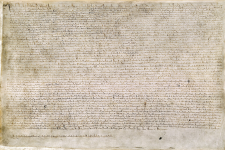This, by Gary Mason in the Globe and Mail, is an issue with which both provincial and the national government must deal in the not too distant future:
----------
We can’t ignore the fact that some mentally ill people do need to be in institutions
GARY MASON NATIONAL AFFAIRS COLUMNIST
VANCOUVER
Details continue to emerge surrounding the random stabbing attack on the streets of Vancouver last week that left one person dead and another with his hand severed.
The accused, Brendan Colin McBride, 34, has been charged with second-degree murder and aggravated assault. Police say he has a history of mental illness, violent offences and more than 60 interactions with police across Metro Vancouver.
The incident has triggered a fresh wave of anxiety in the area over random assaults. It can certainly be said Vancouver has become all too familiar with stranger attacks, ones often carried out by people deemed to have severe mental illnesses. Reaction to these events now follow a well-worn script.
Police decry a criminal-court system that releases serial criminals on bail to commit more crimes. Law enforcement officials then promote the idea of enforced institutionalization of those with a mental illness so severe it poses a danger to others. Politicians then chime in to talk about the need to put more resources into mental-health services and promise to examine the idea of institutionalizing people against their will.
NDP Premier David Eby said much the same thing after the last random attack in Vancouver allegedly involving someone with a mental illness. He said it again after this most recent one, promising to soon unveil a plan to deal with the problem.
The merry-go-round of reaction speaks to the complexity of the issue. It’s easy to demand the return of asylums to house those who are not
compos mentis and who pose a threat to themselves and society. If it was as simple to actually do it, however, it would have been done years ago.
But locking people up against their will isn’t easy – nor should it be.
The deinstitutionalization of the mentally ill in Canada began in the 1960s and carried on throughout the 70s and 80s. Health and Welfare Canada estimates that the number of inpatient beds at psychiatric hospitals (also known as insane asylums) decreased from four beds per 1,000 population in 1964 to less than one bed per 1,000 population by 1979. According to a report by the Canadian Institute for Health Information, Canada had 50,000 psychiatric beds in 1960. By 2019, the number had fallen to 7,200.
Many of those released from institutions such as Riverview in suburban Vancouver ended up on the streets. In fact, one can plot the shocking degradation of the Downtown Eastside to the release of so many patients from Riverview. Today, the area is populated by people who, once upon a time, might have been getting care in a psychiatric hospital.
There is no question we have a problem – one being faced by cities across North America where deinstitutionalization similarly took place decades ago. Without a place to be cared for, people with severe mental illnesses end up committing crimes, for which they go to jail. Then they get released and commit more crimes. Prisons are not equipped to care for these folks.
Opioids have also had a devastating impact on the brains of many people on the streets, leaving many so damaged they are of no fit mind to take care of themselves. They are effectively being left to die in empty hotel rooms and alleyways.
But here is the reality: we have a mental-illness epidemic in this country. The Canadian Mental Health Association estimates that mental illness affects 6.7 million Canadians. One in two of us in this country have – or have had – a mental illness of some description by the time they reach 40, according to the Centre for Addiction and Mental Health (CAMH). Only a small fraction have a disability so severe they can’t function as a responsible adult in society and pose a threat to those around them.
We need a place for them.
We need to establish a sanctuary where people with severe mental illnesses can be treated – maybe in some cases against their will. These hospitals can’t resemble those from yesteryear, the ones that gave us the disturbing images depicted in the movie
One Flew Over the Cuckoo’s Nest. We have to reimagine – and properly fund – a modern version of Riverview.
It needs to be part of a renewed commitment to improving mental-health services across the country more broadly. While digesting the enormous financial costs this will impose on governments, we need to understand the downstream costs thatmental illness already imposes on taxpayers in the form of visits to emergency rooms, police time, court time, jail time, rinse-and-repeat time.
The total financial impact of mental illness in Canada is more than $51-billion a year, according to CAMH.
We can never go back to a time of forced lobotomies and sterilization. But we can give birth to a new vision for psychiatric hospitals that keep patients safe – and society, too.
----------
This is NOT a law and order issue; it is social policy and health care and it touched, heavily, on civil/human/Charter rights.
Provinces need to rebuild mental hospitals, but the national government needs to come to grips with the thorny issue of treating people against their will.
Over to you, Mr Poilievre.










